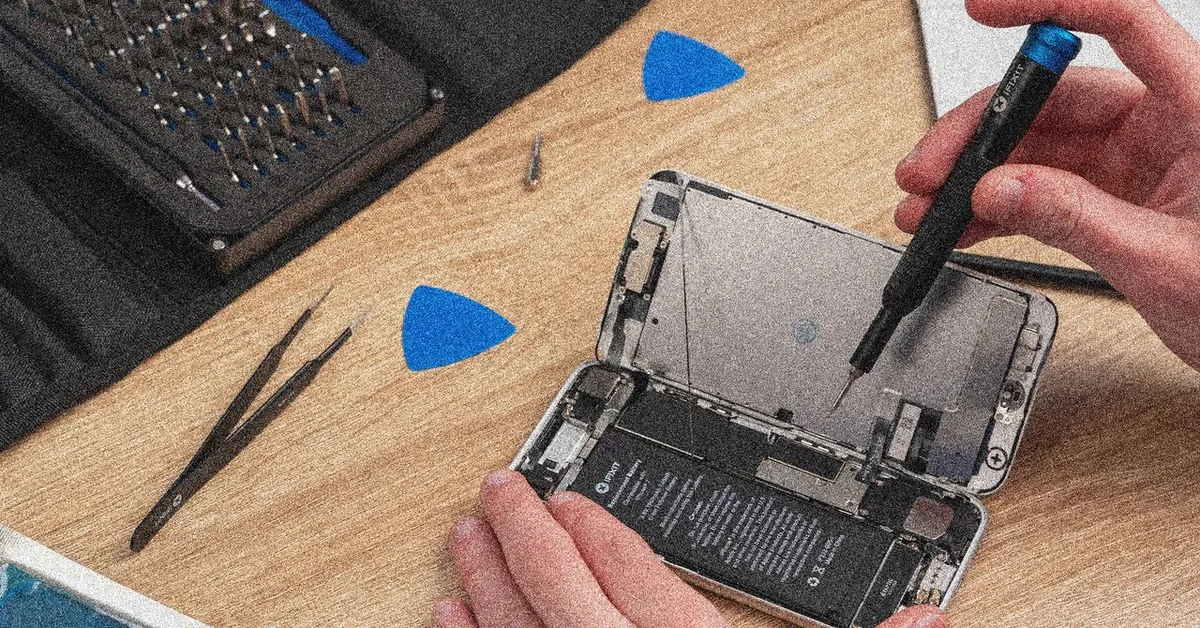
When it comes to your electronic devices, how often do you replace your laptop? Is it every five to seven years? Perhaps even longer? Many users do not wait as long to upgrade their smartphones, but a new campaign from DIY supplier iFixit and refurbished device retailer Back Market aims to change this trend. As Earth Day approaches on April 22, these two companies are advocating for consumers to replace their smartphones every five years instead of the national average of just two and a half to three years.
The responsibility of maintaining older technology doesn't solely rest on the shoulders of consumers. iFixit and Back Market are calling on policymakers and manufacturers to extend smartphone parts and software support to a full 10 years. Currently, major phone manufacturers like Apple, Google, and Samsung provide support for about seven years. However, many other brands offer significantly less, often half that time or even worse.
For example, by simply replacing the battery and keeping an iPhone 13 for five years instead of adhering to the typical upgrade cycle of two and a half years, users can reduce that device's carbon emissions by 49 percent. This reduction could prevent an astounding 15.6 million tons of CO2 emissions annually. If the device is kept operational for a decade through repairs and refurbishments, emissions could be cut by an impressive 68 percent. These figures are derived from various sources, including Apple’s Product Environment Reports and studies on refurbishment emissions.
The partnership between iFixit and Back Market goes beyond just a marketing campaign. Back Market, known for selling refurbished tech such as phones, laptops, and gaming consoles, will feature iFixit’s how-to-repair guides on its app and website, starting with iPhone repair guides. This initiative encourages consumers to explore repair options before resorting to trading in their devices for refurbished models.
Many common repairs, such as replacing a screen or a battery, can be quite simple. Back Market will also offer iFixit’s repair toolkit directly through its platform. For those who may feel overwhelmed by the idea of a DIY repair, options to trade in devices for refurbished models will still be available.
The timing of this announcement is significant, especially considering the ongoing trade tensions between the US and China. While some electronics, including smartphones and laptops, were exempted from a 145 percent tariff, they are still subjected to a 20 percent tariff. Thibaud Hug de Larauze, CEO of Back Market, noted that last week, the company experienced a tripling of growth as consumers rushed to purchase refurbished electronics amidst fears of price increases.
Although tariffs may not have a direct impact on the used smartphone market since these devices are readily available in the US, they will likely make repairs more costly due to the dependency on imported parts. Furthermore, the demand for refurbished phones is expected to rise, leading to higher prices.
As Kyle Wiens, CEO of iFixit, suggests, as costs for new devices are likely to increase due to tariffs, the emphasis on keeping devices running longer becomes even more crucial. Even if repair parts see a slight price increase, repairing devices will still be significantly more economical than purchasing new ones.
Interestingly, the uncertainty surrounding tariffs coincides with positive developments for the right-to-repair movement. According to the Public Interest Research Group, there are currently 41 repair bills being considered across 20 states, covering a diverse range of products from consumer electronics to agricultural equipment. If these bills are enacted into law, manufacturers may be compelled to make their products more repairable, providing consumers with better access to tools, instruction manuals, and spare parts.
In conclusion, if there was ever a time to start learning how to maintain and extend the lifespan of your devices, it's now. By embracing repair and refurbishment, consumers can contribute to a more sustainable future while saving money in the long run.